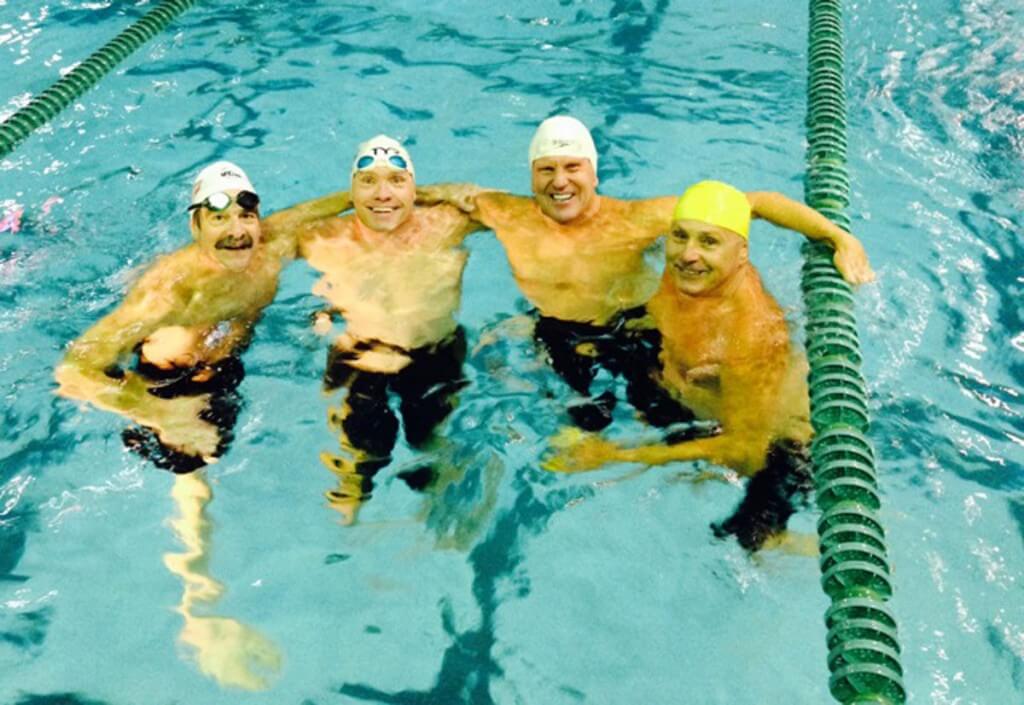The Beauty – And Levels – Of Swimming As a Lifelong Sport

The Beauty – And Levels – Of Swimming As a Lifelong Sport
By Annika Hobson, Swimming World College Intern
The sport of swimming is a lifelong sport that people can join at any stage of life. Whether a child learns to swim, or an adult joins a local Masters swim program, swimming is a wonderful sport for the body and the mind. Due to the low-impact nature of swimming on joints, swimming is a sport that can follow you throughout your life. There are many stages in which one can progress through the sport, with a variety of benefits.
Swim Lessons
Swim lessons are an excellent entry point into the sport as they ensure the athlete is proficient in the water. You do not have to be young to enroll for swim lessons; swim lessons can be conducted at any age. Lessons are vital for both the general population and soon-to-be competitive swimmers. According to the CDC, there “is an average of 11 drowning deaths per day” and there is “an average of 22 nonfatal drownings a day.” To combat the high rates of drowning, swim lessons need to be accessible to everyone, young and old. Not only is swimming a fun sport to compete in, but it is also an important life-saving skill.
Age Group
After swim lessons, if someone fell in love with the sport, they would most likely continue onto age group swimming. Age group swimming has a few different levels dependent on the amount of dedication athletes want to commit to the sport. Age group swimming introduces the competitive side of the sport while also focusing on technique and increasing some yardage.
Summer League
Summer league swim programs typically have two goals: Make swimming a fun and a safe activity. Having a more condensed season, summer league is a great introduction into the world of competitive swimming. Many kids from the ages of about 4-18 are introduced to the sport through summer leagues. Throughout the course of the summer, swimmers learn a lot about technique. Swimmers can learn how to further develop all four competitive strokes, dive, perform relay starts, turns, and more. All the learning and improving takes place in a fun environment. Throughout the summer and particularly at the end, meets are held for the swimmers to compete. If a summer league swimmer is not quite ready to be done swimming at the end of summer, they can join club swimming.
Club Swimming
Club swimming is a year-round commitment for the dedicated age-group swimmers. Like summer league, club swimming further develops young swimmers’ abilities while introducing them to the competitive side of the sport. Swimming for a club team has a focal point of preparing swimmers to race in meets across the year. The club season is typically divided into two main seasons with long course in the summer and short course in the fall, winter, and spring. From local club meets to upper-level age-group meets including Junior Nationals, swimmers have many opportunities to compete. Club swimming allows swimmers to grow with the sport and gain new experiences at any speed level. Unlike most sports, club swimmers have minimal time off. To greatly improve times, a club swimmer must log many hours in the pool. To be a club swimmer, you must love the sport of swimming.
High School
Another great entry into the sport of swimming is swimming for your high school. While many club swimmers enjoy racing for their high schools, you do not have to be a club swimmer to swim in high school. High school swimming is fun as it introduces swimmers to dual meets, has end of season meets and introduces swimmers to new teammates. For example, during my senior year of high school, our state 400 freestyle relay consisted of swimmers from four different local club teams. If we had not done high school swimming, we would have only been competitors. With the breadth of experience from a person just joining the sport to a club swimmer who started when they were six, high school swimming presents many exciting moments. From the first time a swimmer breaks 30 seconds in the 50 freestyle to someone getting their time standard for the regional meet, high school swimming bonds teammates and helps everyone develop within the sport.
College
After age group swimming, the next step can be swimming in college. Not all age-groupers swim in college but due to the variety of college programs many swimmers can find a good fit. There are many divisions in college swimming, with NCAA Division I, II, and III, NAIA and Junior College programs. No matter what program you choose, swimming in college adds to one’s college experience. As a college swimmer you get to travel for meets, improve your swimming, and make lasting friendships with your teammates. Swimming in college takes a lot of hard work and dedication, but if you love the sport it is extremely fruitful.
Masters
One of the best parts of swimming is that it is a lifetime sport. If you want more than solo lap swimming, joining a master’s swim team can be a fun way to continue the sport. Masters swimmers are a range of people from newly minted grads to people who have been swimming for decades. One thing is for sure: Everyone at a Masters practice loves the sport. Other than offering beneficial workouts, many masters programs participate in meets, so you can continue to compete. Additionally, Masters accommodates people of all skill levels, so it is never too late to join the sport of swimming.
All commentaries are the opinion of the author and do not necessarily reflect the views of Swimming World Magazine nor its staff.



